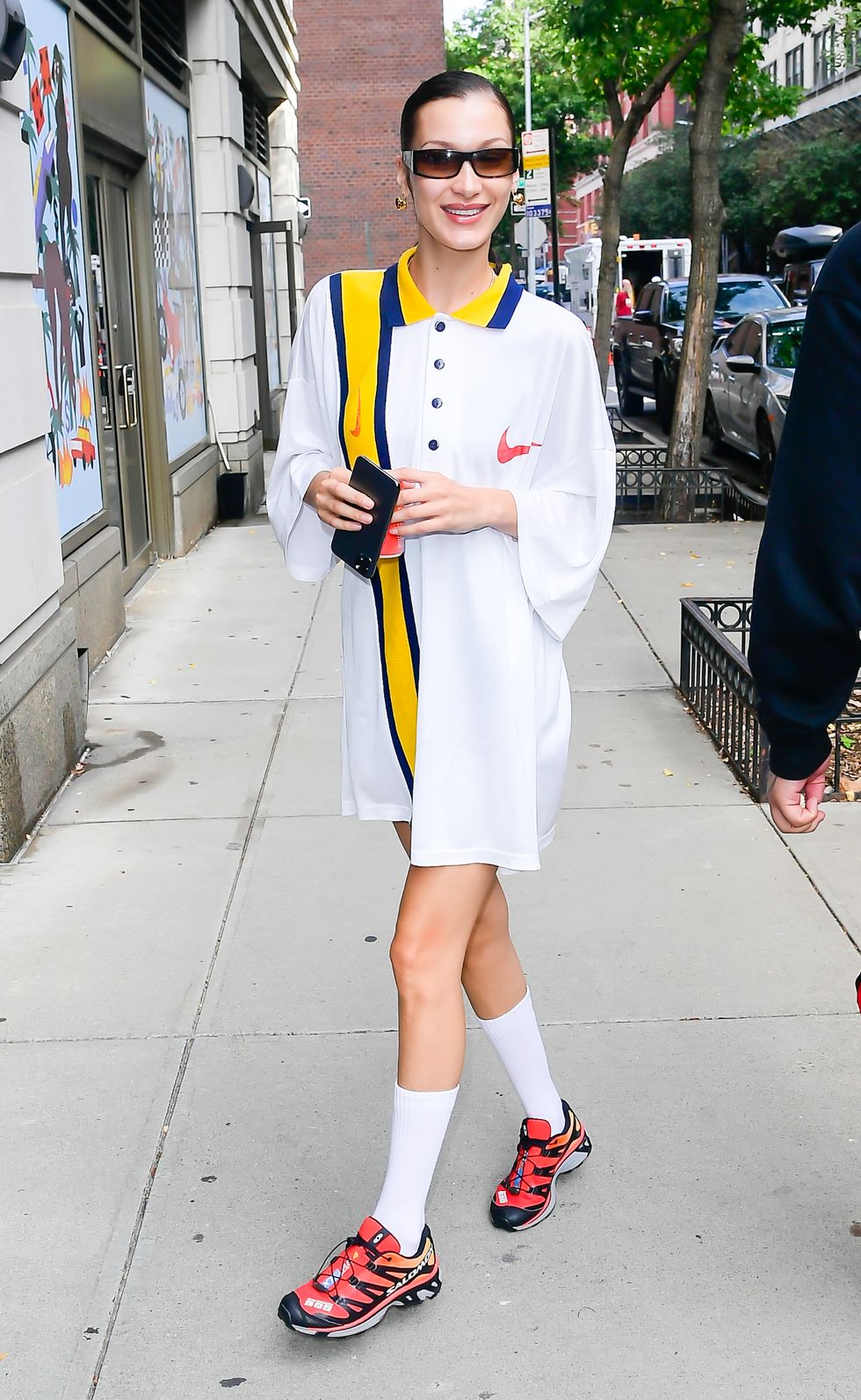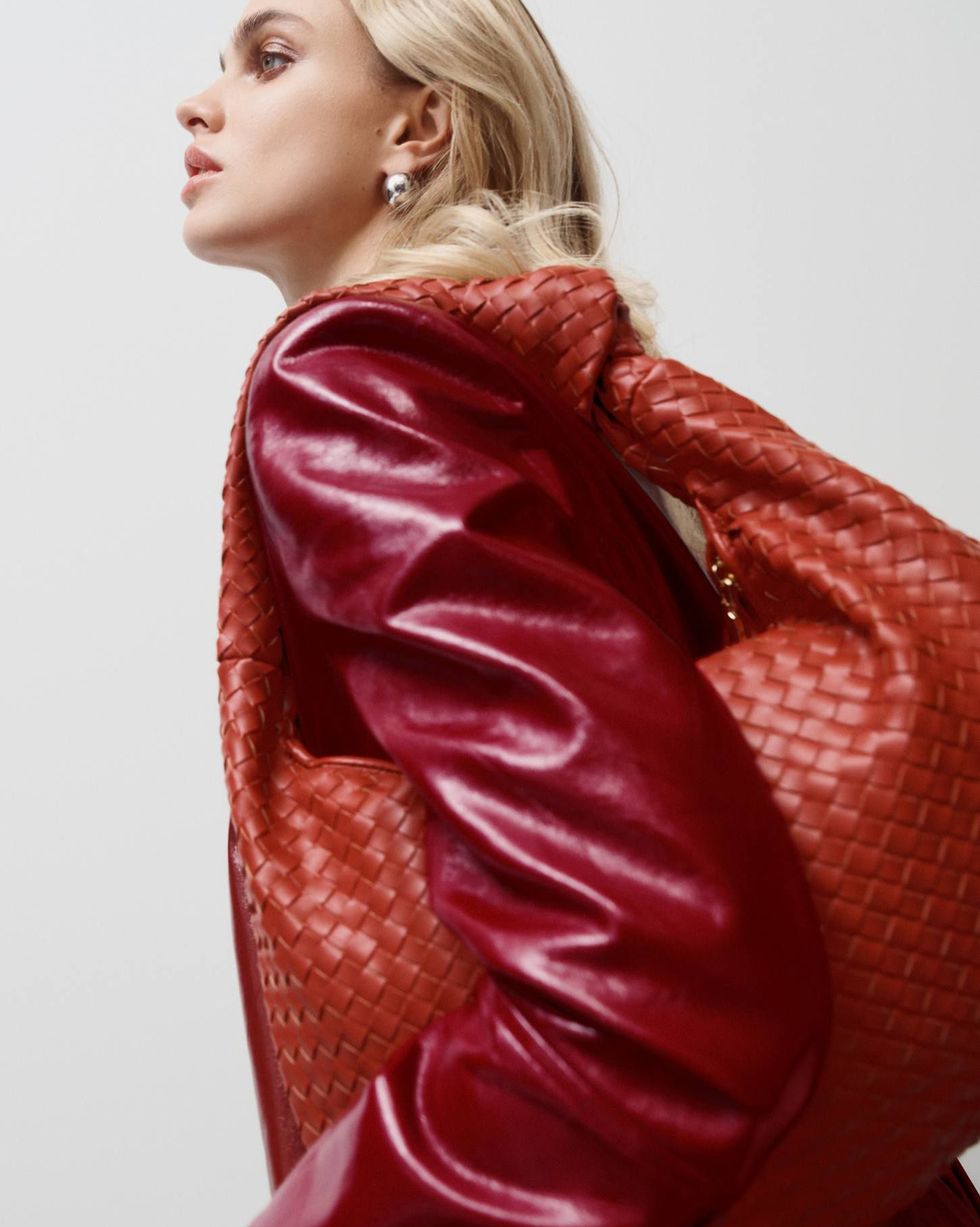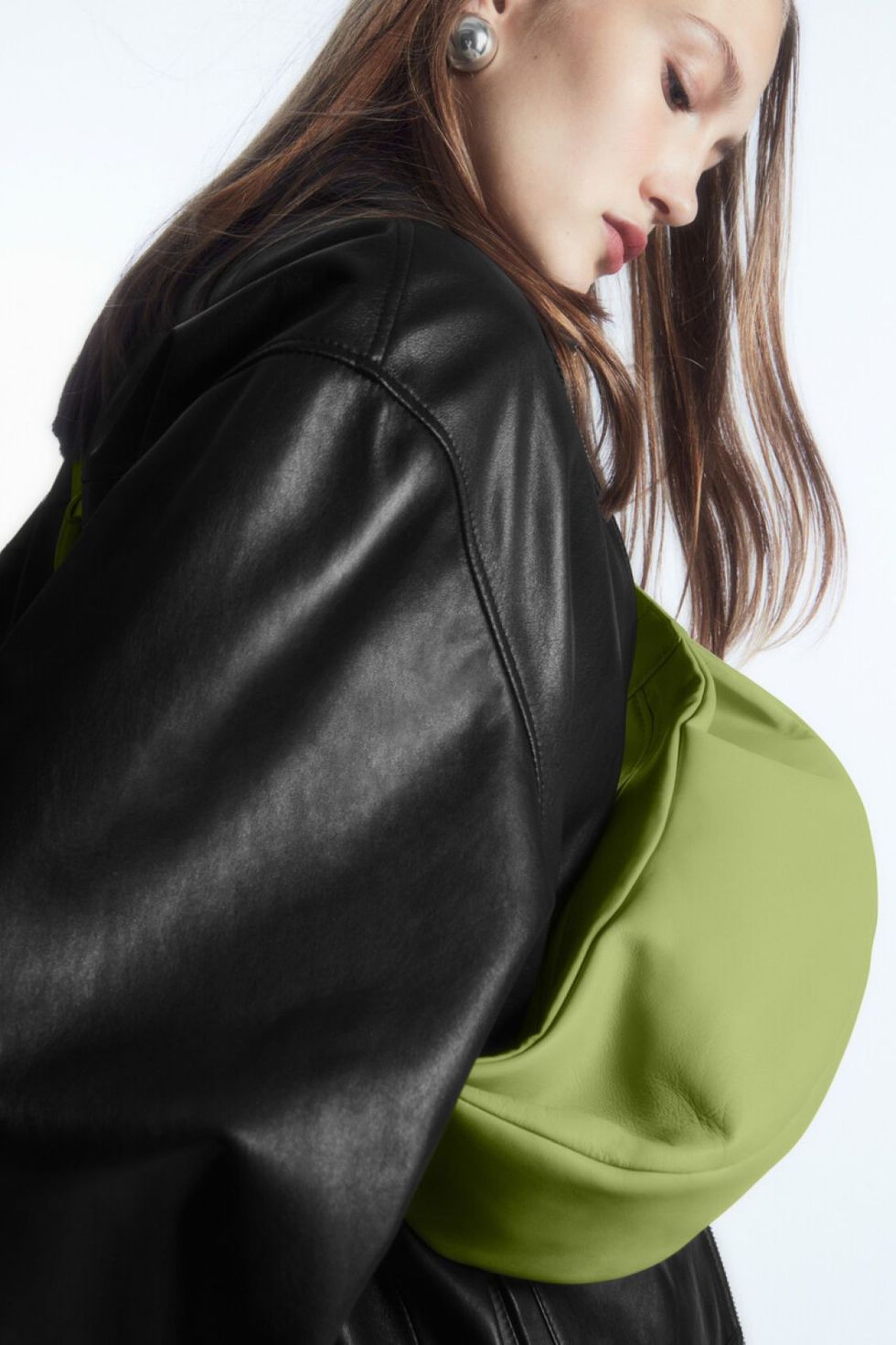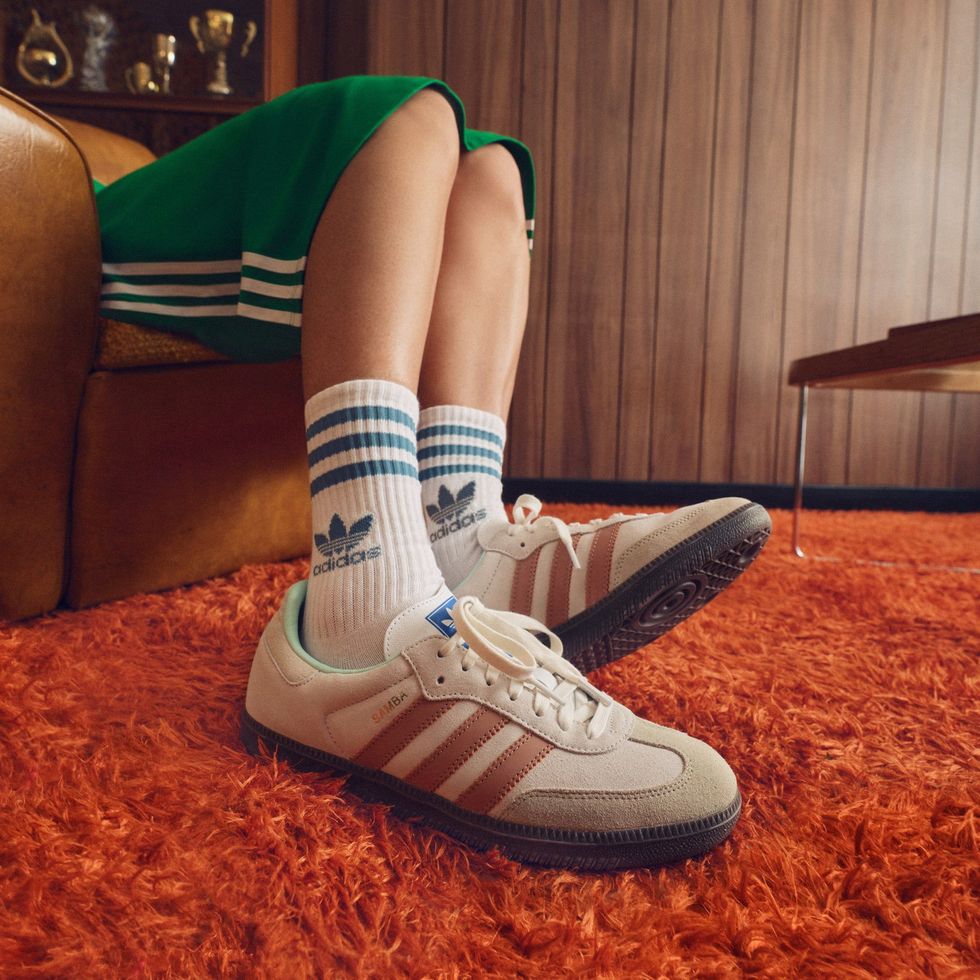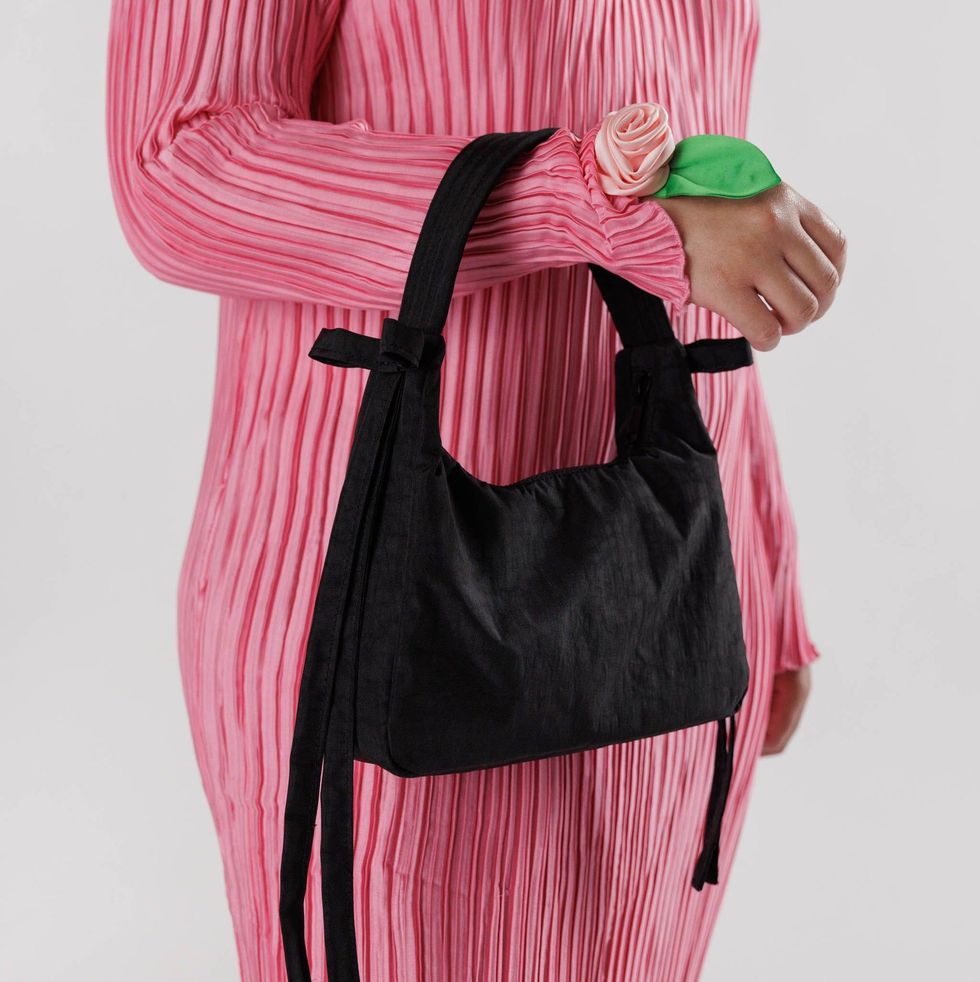Products You May Like
Whether or not you’re on TikTok, if you online shop, you’ve probably witnessed a product rise in popularity and get sold-out within seconds. Maybe you failed to get your hands on the dreamy bow bags from the Sandy Liang x Baggu collaboration that went viral this past summer. Perhaps you’re despondent after repeatedly refreshing the Adidas website in the hopes that the brand’s signature Sambas will be restocked in your size. Replace those sneakers with any sartorial object of your desire—the quilted COS bag, the Ganni x New Balance drop, the Onitsuka Tiger Mexico 66, the braided Anthropologie satchel—and it’s likely you’ll see the same dreary block letters staring back at you: sold out.
That’s a bummer, but maybe you can ingest a quick retail high outside of fashion, say, in music or entertainment. Taylor Swift or Beyoncé tickets? Sold out. The Barbie movie on opening weekend? Sold out. That Instagram-favorite bagel shop in downtown New York City? Even if you queue up for 45 minutes, it’ll still be sold-out. In case you’re wondering what’s going on, why everything, everywhere is suddenly out of reach, there are a few long-winded answers. And like most things in our late capitalist, internet-first world, it begins with TikTok. It’s no coincidence that most nice things that rise to a cult hall of sold-out fame first find veneration on the social media app.
Today, many of us construct our identities from the things that we buy. Our purchases have become a way to signal who we are or who we want to be, and these decisions are often framed by the infamous For You Page (FYP). Even though it’s a page that’s explicitly “for you,” it’s also for half a million others whose interests intersect on a similar plane. This creates a hyperfixation around a specific trend or product that embodies your seemingly unique personality. You could be vying for Hailey Bieber’s Salomon trainers, but so are several others who deeply identify with the same niche. This pushes the product in question to a collective covetable status.
According to Tariro Makoni, a fashion trend analyst and content creator, the TikTok algorithm reinforces the need to express hyper-individual traits through a specific object, and as a result, contributes to the trend of things selling out. “If you have FOMO from a party, you don’t check your Instagram stories for 24 hours; if you have FOMO from something on your algorithm, like a pair of Sambas or a Taylor Swift concert, you’re likely stuck with a visual signal of exclusion every time you open your TikTok,” she tells ELLE.com. “So when you have the chance to buy into something that feels synonymous with your identity, you’re willing to cascade mountains to do so, and these rapid consumption behaviors en masse sell things out.”
Besides, there’s a big trust factor in TikTok’s FYP. If products recommended on Google or videos suggested on YouTube appear as profit-making machines looking for your money, the TikTok algorithm—celebrated for its prowess in curation and personalization—feels more like a friend telling you what you need. “On TikTok, you’re in the passenger seat and the algorithm exposes you to products and brands you may never have heard of,” Coco Mocoe, a trend forecaster and TikToker, explains. “When you see how many views and comments certain products have, it creates a sense of pandemonium and encourages you to buy something before it gets even more popular, especially because the FYP is telling you it’s on-brand with your choices.”
Beyond the confines of an app, the present circumstances we live in also shape our consumption habits. During the pandemic, everything from toilet paper to bucatini was sold-out because lockdown forced manufacturing to a halt. Roughly three years and several COVID-19 variants later, we’re faced with a similar fate, only this time it’s likely due to excessive consumption triggered by an overarching lack of control. Think: racial wars, impending climate doom, inevitable patriarchy, and cost of living.
Nonetheless, as consumers, we still have control over what we buy—arguably, it’s one of the only things we can control. Writer Imogen West-Knights dubs this feeling “luxury fatalism”: “The feeling that everything is garbage, and that there is no real recourse to change that fact, so we should just go all in on whatever it is that we enjoy about life.” Although the influence of TikTok, individual expression, and a control-heavy consumerist approach explain why we’re buying so much that things are selling out left and right, there’s also the other side: why are manufacturers struggling to keep up with the overwhelming demand?
Steve Rowen, a managing partner at the retail analytics firm Retail Systems Research, confirms that the sold-out trend extends to jewelry as well. “It’s rampant with Rolex right now,” he says. “If you visit its flagship store in Geneva, the watches in the display cases have no moving parts inside—they are dummy watches. [Rolex] can’t spare one working Daytona for the store itself.” After all, why display when you can sell? Rowen explains that the shift in production methods can be traced back to the pandemic. Through lockdown, few people had disposable income to spend on shoes or clothing, so retail locations were in no hurry to secure more inventory.
In fact, brands were looking to unload the excess production leftover from March 2020. Then, when the world slowly started to open and people became hungry for frivolous purchases, there wasn’t enough merchandise to go around. Rowen breaks it down: “This is a direct problem of a supply chain rooted in manufacturing plants that are half a world away,” he says. “The question will be whether it’s enough to generate a new pool of brands looking to source products closer to home. That’s where an entirely new conversation about labor and trade enters the mix—it’s quite complicated.”
Then there’s the added caveat of brands diversifying more than ever before. A few decades ago, it was normal for a certain label to also sell bags, shoes, and fragrances. Today, there are even more detailed product categories and entirely new realms of skin care, makeup, and home décor. Susie Wright, a former buyer and stylist at Nordstrom and a blogger who continues to drive big sales to the retailer, associates a label’s inability to restock viral objects with an overpopulation of products. “You can’t really predict that a certain product will become popular on TikTok, and brands are so overstocked that it’s hard for them to chase items when they do sell out,” she says.
Still, it’s tough to believe that brands wouldn’t try harder to capitalize on the demand for a viral product, especially because these moments are so fleeting and unpredictable. It is a well established economic fact that supply drives demand, but equally, scarcity drives demand. The sneaker world is notorious for justifying ludicrous prices with small batch, limited-edition production; the more exclusive the product, the higher the cost. This begs the question: is being sold-out emerging as a status symbol for brands? Surely Adidas, one of the largest sportswear brands in the world, could dial up its manufacturing to better meet the requirements to sell more Sambas.
With that in mind, why are the three-striped shoes still largely sold-out? While smaller brands likely struggle to adapt to the surprisingly high and sudden demand triggered by social media, mammoth companies likely use the circumstance as a ploy to build hype. Rowen explains, “It is very, very hard to maintain impressive profits while playing the scarcity equals fashionable game,” he says. “The only way it can be done is if a brand is willing to resist corporate growth in favor of image. That’s why Adidas may be able to measure out production of the Sambas, but that’s just one product in an otherwise omnipresent line. The halo effect from that one shoe is what makes it interesting.”
Whether or not Adidas is playing the long game to create more discussion around the Sambas, the shoes are still being sold on resale platforms like eBay and Depop for higher prices. Resale is another inevitable consequence of brands failing to meet consumer demands. When the immensely coveted Sandy Liang x Baggu collection sold out within seconds of its launch, dedicated buyers who managed to snag the collab decided to make a profit from their luck. Case in point: the brand retailed the nylon crescent bag at $58 but it is currently listed on Depop for over twice the price.
At first glance, you may wonder why brands would allow resellers to make a profit off their products. But the only thing better than being sold-out is being resold for incredulous prices, further highlighting just how popular and in-demand the product, and by extension, the brand is. “The more these items cost in the resale economy, the more ‘clout’ they create for the brand; inflating the product’s value and increasing demand within the direct brand-to-consumer marketplace,” confirms Makoni.
In hindsight, both Sandy Liang and Baggu, previously niche brands, have risen to cult status, creating widespread demand across the U.S., U.K., and Europe. The labels also responded to the chaos caused by resale websites with a carefully thought-out pre-order plan. For a week leading up to the release, customers could pre-order products from the collaboration, scheduled to be shipped months later in November. The brands also placed a limit on how many products each person could buy to prevent buyers from reselling in large quantities. Sophie Bennett, a 23-year-old sociology student from London, is among the resellers who is attempting to profit off the drop’s popularity.
On Depop, Bennett is selling a Sandy Liang x Baggu bag originally priced at $62 for $176, and she has no regrets. “When collaborations like this happen, brands always say, ‘Sorry, we didn’t expect it to sell out this quickly,’ but I think that’s a lie…they launch limited quantities to create more demand and hype around it,” she says. “I know some people may have a problem with me reselling the bag for a higher price, but I don’t see the issue. No one’s being forced to pay extra, there is a demand for it, and if big brands can try to make a profit off of it, I’d be foolish not to do the same.”

Darshita Goyal is a culture and fashion writer. When she manages to tear herself away from TikTok and Selling Sunset, you can find her sampling cannolis or hunting down bucatini with the most parmesan.

